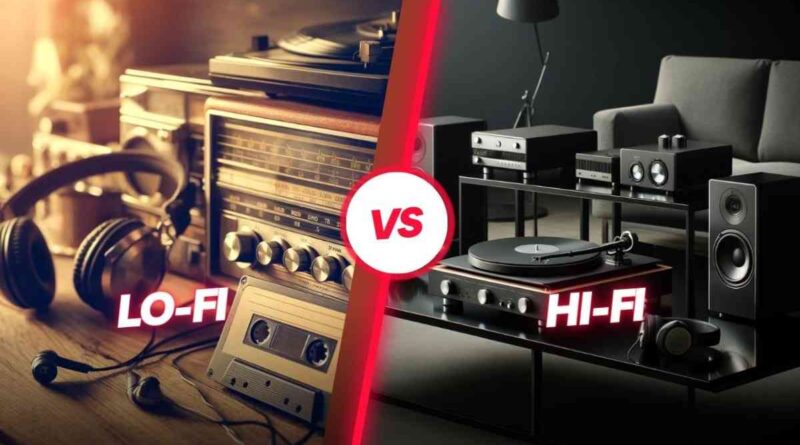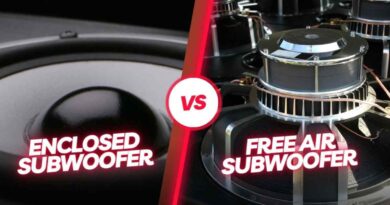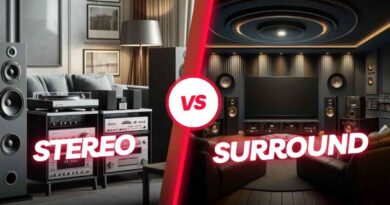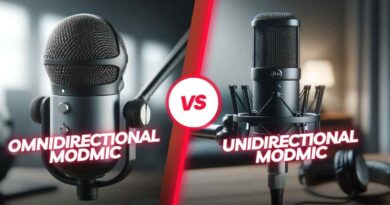Lo-Fi vs Hi-Fi: What’s The Difference?
I’ve been into sound systems for years, digging into everything from old record players to the newest high-tech gear. Today, let’s talk about something interesting: Lo-Fi versus Hi-Fi. You hear these terms a lot when people talk about how good music sounds, but not everyone knows exactly what they mean. In this post, we’ll explain Lo-Fi and Hi-Fi in detail, so you can figure out which one fits your taste in music best.
What Is Lo-Fi Audio?
Definition and Characteristics
Lo-Fi, short for low fidelity, refers to sound recordings which contain technical flaws and imperfections that are usually avoided in high-quality recordings. These imperfections include background noises, distortion, or a general ‘muddiness’ in sound. Despite this, Lo-Fi has a unique appeal, often providing a nostalgic or intimate atmosphere that many listeners cherish.
Common Uses
Lo-Fi music is popular in settings that require ambient noise or background sound that isn’t intrusive. It’s often used by students for studying or by workers in offices who prefer a non-distracting background that helps maintain focus. Its warmth and less polished sound can also make listening feel more personal and comforting.
Audio Specifications
Lo-Fi does not prioritize clarity or crispness. Instead, it may feature:
- Lower bit rates: Typically less than 128 kbps.
- Reduced frequency range: Often not exceeding 11 kHz.
Key Takeaways:
- Lo-Fi is cherished for its imperfections and nostalgic quality.
- It’s ideal for non-intrusive background music.
What Is Hi-Fi Audio?
Definition and Characteristics
Hi-Fi, or high fidelity, represents the highest quality of sound reproduction that replicates the original sound without excessive noise or distortion. Hi-Fi systems are designed to be sonically transparent, offering clarity that allows listeners to hear even the subtlest nuances in the music.
Common Uses
Hi-Fi audio is favored by audiophiles and music enthusiasts who seek an immersive listening experience. It’s also preferred in professional settings where accurate sound reproduction is critical, such as in music production and audio testing.
Audio Specifications
Hi-Fi audio typically includes:
- High bit rates: Usually 256 kbps or higher.
- Wide frequency range: Often up to 20 kHz or more.
Key Takeaways:
- Hi-Fi delivers the clearest and most accurate sound.
- It is best for immersive and critical listening experiences.
Technical Comparison: Sound Quality
Clarity and Detail
Hi-Fi systems emphasize precision in sound reproduction, ensuring that every detail is captured and presented clearly. This includes the higher frequencies of sound, which are often lost in Lo-Fi systems.
Dynamic Range
The dynamic range in Hi-Fi audio is significantly broader than in Lo-Fi. This means Hi-Fi can reproduce the quietest and loudest sounds with equal effectiveness, providing a more dynamic listening experience.
Distortion Levels
Hi-Fi systems are engineered to minimize distortion, allowing for cleaner and more accurate sound. In contrast, Lo-Fi systems might include noticeable distortion, part of their ‘character’.
Comparison: User Experience
Accessibility and Cost
Lo-Fi: Generally more affordable and accessible, with many options available for casual listening.
Hi-Fi: Often involves a higher initial investment in equipment and maintenance.
Setting Suitability
Lo-Fi: Best suited for casual, everyday environments where background ambiance is needed.
Hi-Fi: Ideal for dedicated listening rooms or studios where sound quality is paramount.
Audience
Lo-Fi: Appeals to those who appreciate vintage and nostalgic audio qualities.
Hi-Fi: Targets audiophiles and professionals who demand the highest sound fidelity.
Durability and Maintenance
Durability of Equipment
Hi-Fi Systems: Hi-Fi equipment is built with high-quality materials that are meant to withstand years of use. However, the complexity of Hi-Fi systems can make them more susceptible to issues if not properly maintained. Their performance is highly dependent on the environment they are in, as factors like humidity and dust can affect their longevity.
Lo-Fi Systems: Lo-Fi equipment, while not always using the same high-grade materials, tends to be simpler and more rugged. This simplicity can contribute to greater durability under various conditions, especially in less controlled environments.
Maintenance Requirements
Hi-Fi Maintenance: Maintaining a Hi-Fi system involves regular technical check-ups and fine-tuning. Owners might need to engage with professional services for calibration or repairs to ensure optimal performance. Routine maintenance could include cleaning internal components, checking wires and connections for wear, and updating software in digital devices.
Lo-Fi Maintenance: Lo-Fi systems generally require less meticulous maintenance. Routine cleaning and basic checks are usually sufficient to keep them running. Their less complex design means there are fewer components that can malfunction, and they are often more tolerant of less-than-ideal storage conditions.
Considerations for Buyers
Both types of systems have their merits and challenges regarding durability and maintenance. A Hi-Fi system demands a higher level of care but offers superior performance, ideal for those who view listening as a critical experience. In contrast, a Lo-Fi system provides a more forgiving ownership experience at the cost of audio fidelity, suitable for casual listeners or those who prefer a “set it and forget it” approach.
Conclusion: Which is Best?
Determining whether Lo-Fi or Hi-Fi is ‘better’ depends largely on your personal preferences and listening habits. If you prioritize top-notch sound quality and are willing to invest in and maintain high-end equipment, Hi-Fi is undoubtedly the way to go. However, if you’re more interested in a more relaxed, nostalgic sound and don’t want to worry too much about technical details or high costs, Lo-Fi might be perfect for you.
In my experience, Hi-Fi enriches the listening experience by delivering sound that is as true to the original recording as possible, making it my preferred choice for critical and immersive listening. However, I also appreciate the character and ease of use that Lo-Fi offers, especially in less critical listening environments.
Frequently Asked Questions
What does “fidelity” mean in lo-fi and hi-fi?
Fidelity refers to how close something is to the original. In this context, it refers to the level of detail and accuracy in reproducing sound or visual information.
Is lo-fi music bad quality?
Lo-fi music isn’t inherently bad quality. It often has a deliberate aesthetic with qualities like background noise, tape hiss, and slight imperfections.
What are the benefits of listening to lo-fi music?
Many find lo-fi’s relaxed and nostalgic vibes create a calming atmosphere for studying, working, or just relaxing.
What are some hi-fi music benefits?
Hi-fi music allows you to appreciate the full range of detail and clarity an artist intended, offering a more immersive listening experience.
When would you use a lo-fi video?
Lo-fi videos, often shot on mobile phones, can feel more personal and authentic, making them suitable for behind-the-scenes content or vlogs.
When is a hi-fi video more appropriate?
Use hi-fi videos for polished presentations, product launches, or anything where a professional look is important.
Are lo-fi prototypes just sketches?
Lo-fi prototypes are more than sketches. They’re basic representations that convey the core functionality and user flow, allowing for quick feedback.
How much detail should a hi-fi prototype have?
Hi-fi prototypes should closely resemble the final product in terms of visuals and interactivity, helping users test the near-finished design.
Is lo-fi always cheaper than hi-fi?
Yes, generally creating lo-fi prototypes and content is less expensive due to the lower production value and time required.




